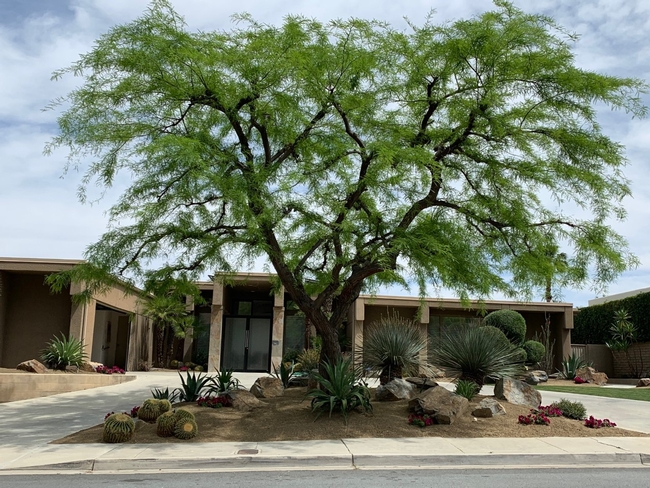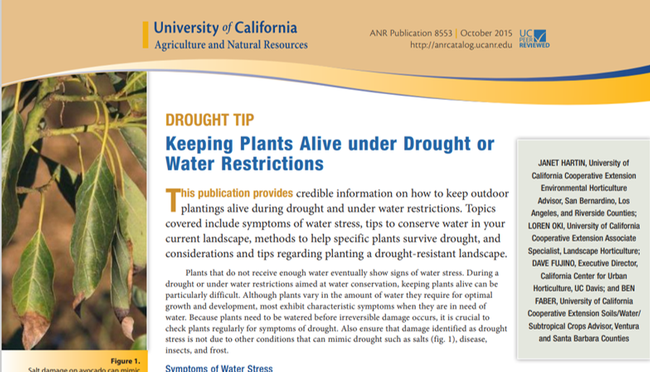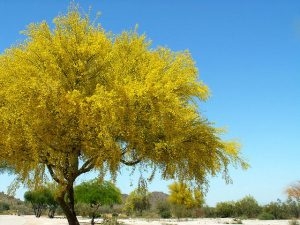During the drought, your trees should come first! Because many well-maintained trees don't reach their prime until their 4th or 5th decade, it's important to keep them watered during the drought and water restrictions. Older trees absorb higher levels of carbon dioxide, do a better job of cooling urban heat islands and providing shade. They also filter air and water pollutants, reduce soil and water erosion, provide habitat for wildlife, enhance privacy, beautify neighborhoods and parks, enhance property values, and even improve mental and emotional health. Trees are worth saving! The price of starting over is just too steep.
Recognizing early signs of drought stress is important because irreversible damage can occur that no amount of watering will correct. If you cash in your grass for a water district rebate, remember to water any trees that relied on water from the lawn sprinklers. This is because tree roots grow laterally quite a distance, often well beyond the dripline of the tree under the lawn. Over time, start watering them more deeply and less often to encourage deeper roots and enhanced stability.
Just a few deep waterings in mornings or late evenings with a garden hose during spring and summer can keep a tree alive, even during a drought. Keep the trunk dry and water from the mid-dripline outward. Apply a slow steady stream of water, moving the hose to another section of the tree every 1-2 hours. Another inexpensive way to water your trees is to encircle them with soaker hoses that connect to a garden hose. The soaker hose should be in concentric rings about one foot apart starting two feet away from the trunk for a larger tree, closer for a more recently planted tree with a more confined root system.
Check trees regularly for these common symptoms of water stress:
• Wilting or drooping leaves that don't return to normal by evening
• Yellow, brown or sometimes gray leaves that may drop from the tree
• Small new foliage and stunted overall tree growth
Other ways to reduce tree water loss include:
• Keep weeds out (they compete for water
• Maintain a 3-4” of organic mulch or 2” layer of inorganic mulch (pebbles, decomposed gravel) around your trees, starting a few inches away from the trunk outward.
• Avoid fertilizing since that increases their water need.
• Do only necessary pruning (to remove dead wood and any dangerous limbs that look like they might fail) since this stresses the tree and can increase its water need.
--------------------------------------------
UC Resources at Your Fingertips:
Free Download Publications: https://anrcatalog.ucanr.edu
-Keeping Plants Alive Under Drought and Water Restrictions
-Sustainable Landscaping in California
-Lawn Watering Guide for California
-Use of Graywater in CA Landscapes -
CA Institute for Water Resources: http://ciwr.ucanr.edu/ (blogs, climate-smart ag, podcasts, etc.)
UC Cooperative Extension Master Gardener Program:
For more drought tips and help with your home gardening questions, contact a UCCE Master Gardener volunteer. Find your local program atucanr.edu/FindUs/
Attached Images:
